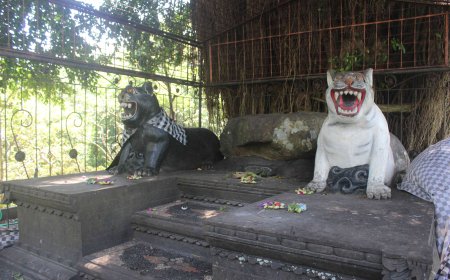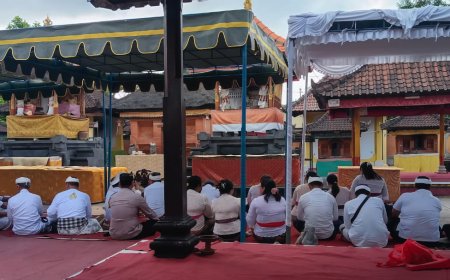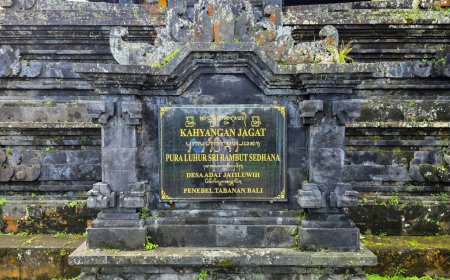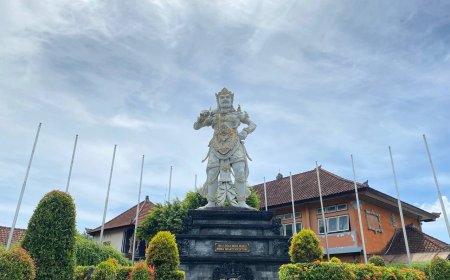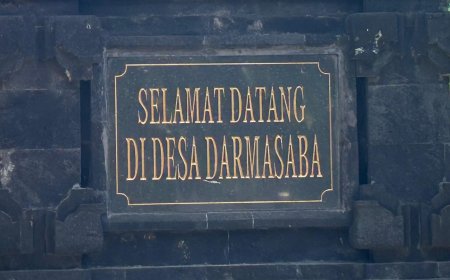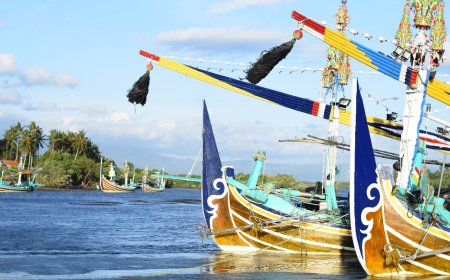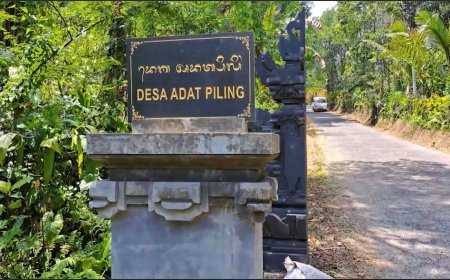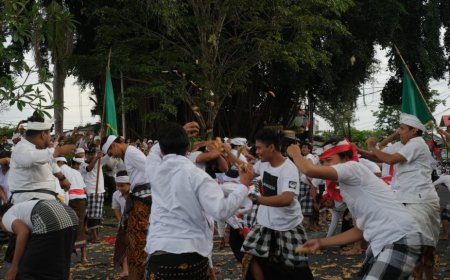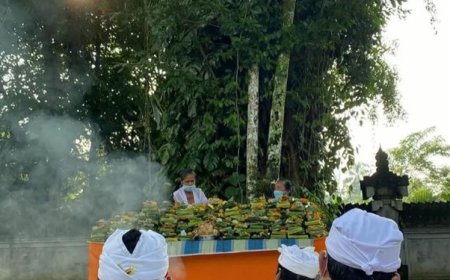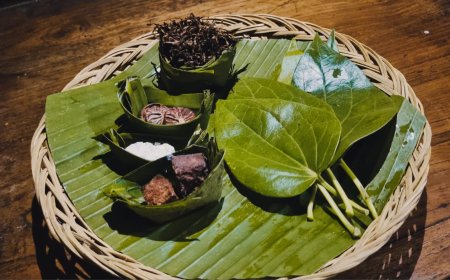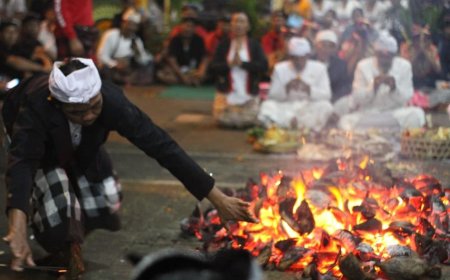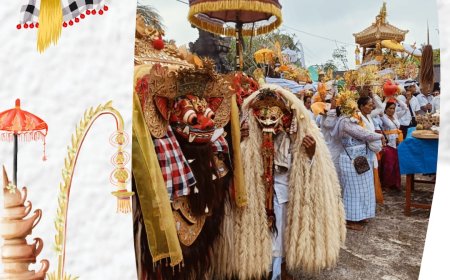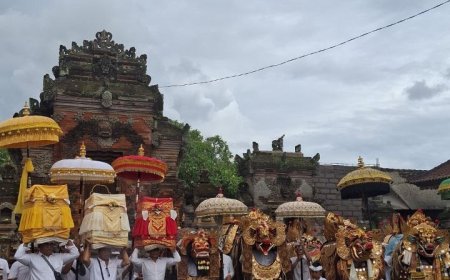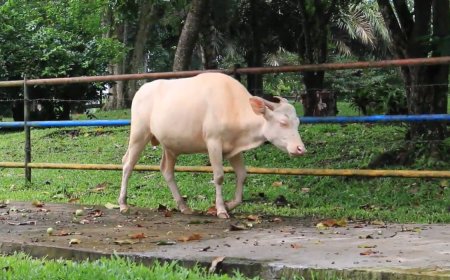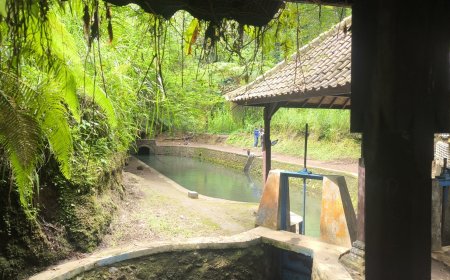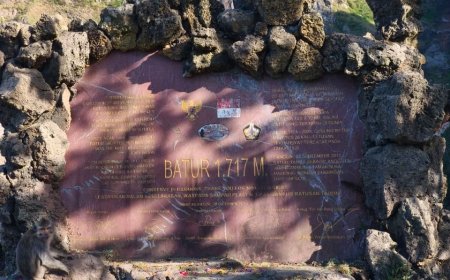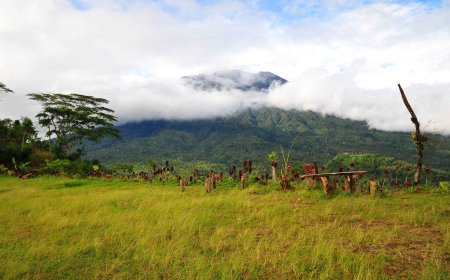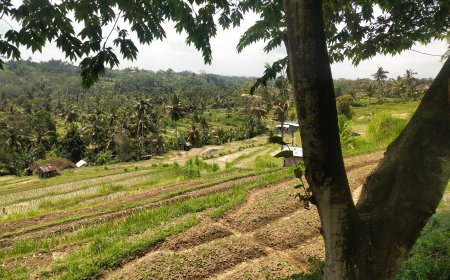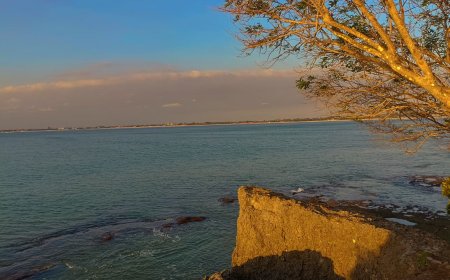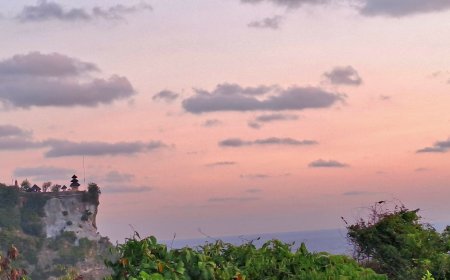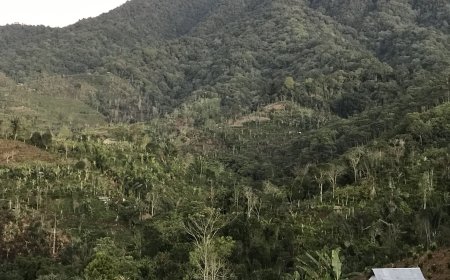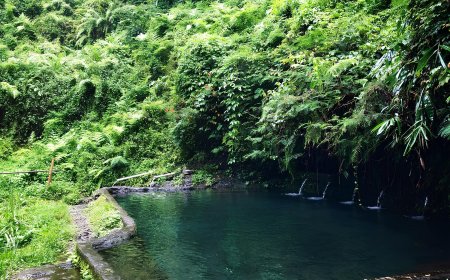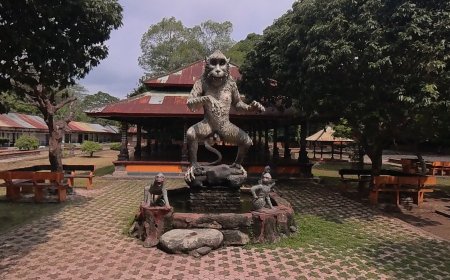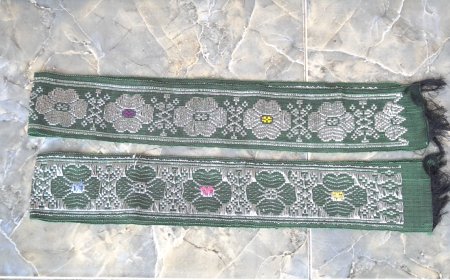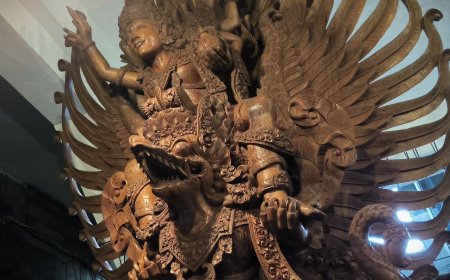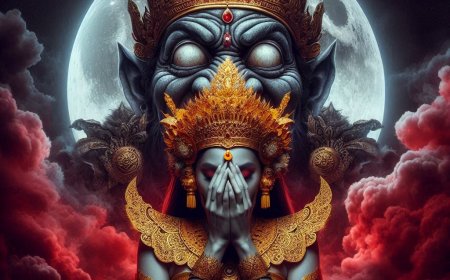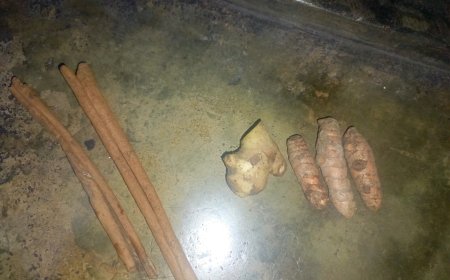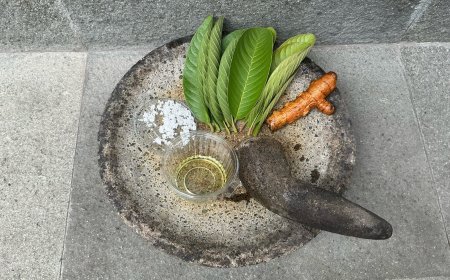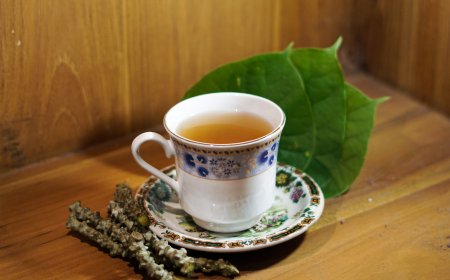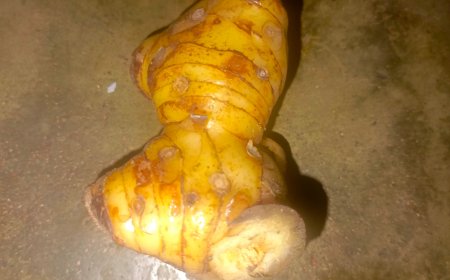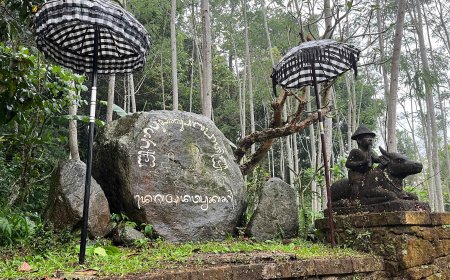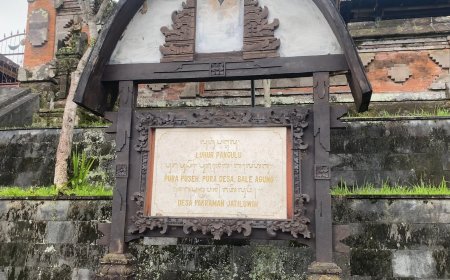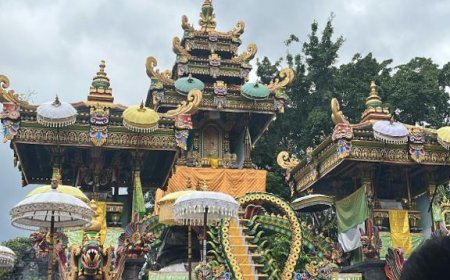Puseh Luhur Bedha Temple: A Historical Legacy of Patih Kebo Iwa
Puseh Luhur Bedha Temple is located in the Bedha Traditional Village, Tabanan Subdistrict, Tabanan Regency. Built before 1343 AD, this temple involves Kebo Iwa in military defense and the introduction of the subak irrigation system. Tri Mandala, Bale Agung, and the tradition of offerings are integral parts of its existence. There is also the Ngaben Bikul, a unique ceremony purifying the spirit from disease spirits, deeply rooted in the culture of Bedha Traditional Village. The piodalan in Puseh Luhur Bedha Temple is strongly grounded in the spirit of communal cooperation, making this temple not only a sacred place but also a center of social and cultural life.

Puseh Luhur Bedha Temple is a Kahyangan Tiga and Kahyangan Subak temple located in the Bedha Traditional Village, Tabanan Subdistrict, Tabanan Regency. There are several written sources that mention the estimated construction time of this temple, including the Lontar Purana Puseh Luhur Bedha Temple and Lontar Purana Bali Dwipa. According to the records in the Lontar Purana Bali Dwipa, the construction process of this temple began as part of the military defense mission of King Bedahulu, namely Prabu Sri Astasura Ratna Bumi Banten, who ruled Bali from 1328 AD to 1343 AD. Until now, the Puseh Luhur Bedha Temple building still stands strong, with a towering eleven-tiered meru roof.
The figure of Kebo Iwa played a crucial role in the establishment of Puseh Luhur Bedha Temple. In addition to being a military commander (patih), Kebo Iwa was also a master builder or architect. Kebo Iwa was the one who built the Bedha Traditional Village as a defense fortress for the island of Bali from attacks/aggressions by the Majapahit Kingdom during his mission. The fortress was called Bedog, which is believed to be the origin of the name Bedha Traditional Village. When arriving in the area now known as Bedha Traditional Village, Kebo Iwa first built a temple with a high meru structure, now known as Puseh Luhur Bedha Temple. In addition to being a Kahyangan Tiga, this temple also became a Kahyangan Subak, considering that Kebo Iwa was a figure who introduced irrigation and subak systems, ensuring the prosperity of the community with abundant rice fields in the past.

Bale Agung of Puseh Luhur Bedha Temple (Source: Private Collection)
The structure of Puseh Luhur Bedha Temple follows the concept of Tri Mandala, consisting of Nista Mandala (Jaba Pisan) symbolizing bhur loka, Madya Mandala (Jaba Tengah) symbolizing bhuwah loka, and Utama Mandala (Jero) symbolizing swah loka. Puseh Luhur Bedha Temple has a Bale Agung, a symbol of Kebo Iwa's grandeur. This bale was originally used to accommodate the army of Ki Patih Kebo Iwa, numbering 800 people. The construction of Bale Agung by Kebo Iwa used driftwood from the South Tabanan coast. During a flood and a large storm, large pieces of wood from Jembrana were carried away and washed ashore on the South coast. These were used to build a resting place for Kebo Iwa and his troops.
Bale Agung has an incredibly long area, supposedly serving as the sleeping quarters of Kebo Iwa, believed to be 500 meters long and consisting of 1,007 pillars. This extended from the current eastern boundary of Bale Agung to the west, passing through the Yeh Empas River, marked by the discovery of remnants of pillars. Currently, only 16 pillars of Bale Agung remain, and its wooden structure, especially the roof, has never been replaced. The last pillar on the opposite side of the river is now just a mound. This mound has become the site for the construction of the Kebo Iwa statue.
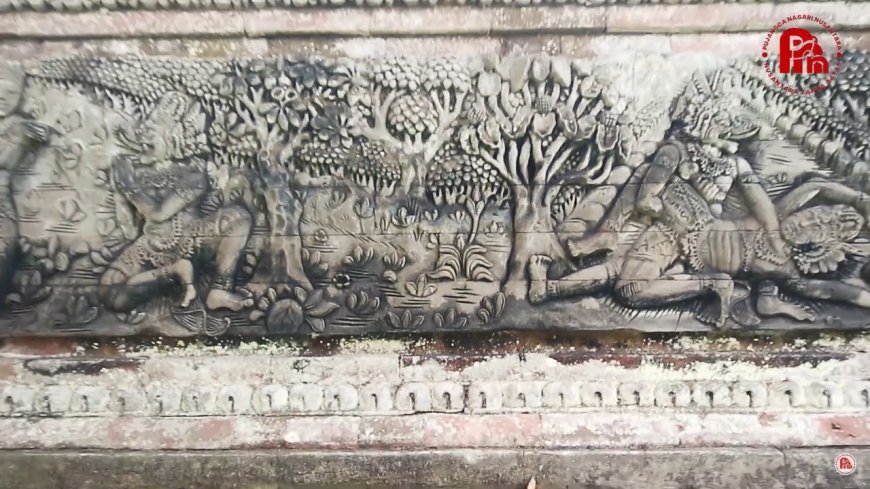
Reliefs On Bale Agung (Source: Private Collection)
The grandeur of Kebo Iwa's story in Bedha Traditional Village is carved in reliefs surrounding Bale Agung. These reliefs narrate the life history of Kebo Iwa, from birth to surrendering to Patih Gajah Mada when trapped in Majapahit. The temple walls also feature beautiful reliefs telling a different story, specifically about the rotation of Mount Mandara Giri. It is said that in Bale Agung, there are shrines for Ida Betara Begawan Penyarikan and Ida Betara Nusa Mecaling, who have always protected Bedha Traditional Village for its safety.
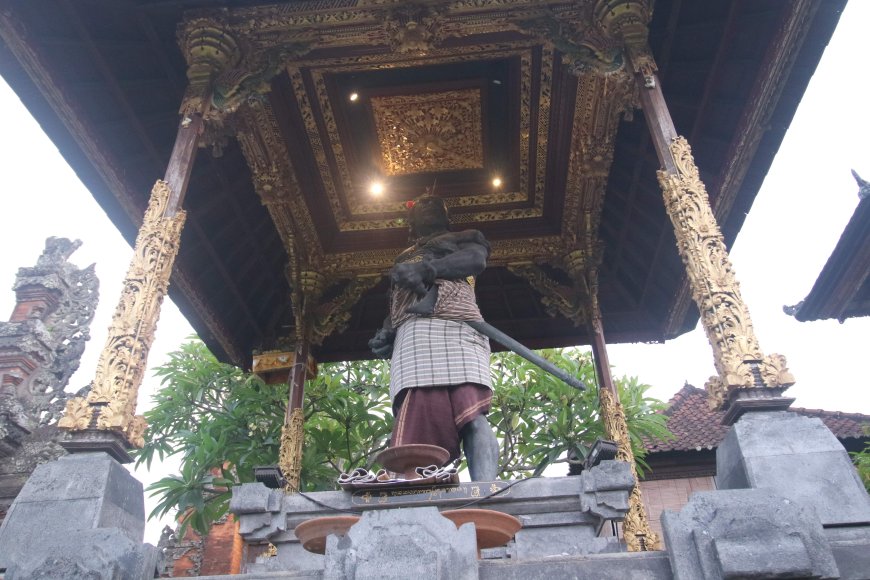
Kebo Iwa Monument (Source: Private Collection)
To honor the sincere dedication of Kebo Iwa, the people of Bedha Traditional Village manifested an idol of Kebo Iwa, standing at 2.25 meters. This Kebo Iwa idol is called "Palinggih Ida Betara Bagus Kebo Iwa" or "Kebo Taruna." The ritual of offering ceremonies to honor the services of Kebo Iwa is conducted in a piodalan ceremony every 6 months (Balinese month), specifically every 210 days, on Wednesday, Kliwon Panca Wara, Wuku Pahang (15th Wuku), known as Buda Kliwon Pegat Uwakan (Cut off because it is no more) or a month after the Galungan celebration. One form of offering ceremony commonly performed during the "Melaspas" of sacred buildings in Bali, such as temples and consecrated statues, involves two "Sarad."
Puseh Luhur Bedha Temple is supported by 38 banjars (community groups) spread across three sub-districts in Tabanan Regency, namely Tabanan, Kediri, and Kerambitan. It is no wonder that during the pujawali celebration, this temple becomes crowded with devotees. The piodalan at Puseh Luhur Bedha Temple is deeply rooted in the spirit of communal cooperation. This is evident in the piodalan, where both ngayah (volunteer work) and construction costs are carried out cooperatively through contributions from the community, accompanied by government assistance.

Nista Mandala of Puseh Luhur Bedha Temple (Source: Private Collection)
There is a traditional custom unique to Bedha Traditional Village, known as Ngaben Bikul (mreteka merana). Ngaben bikul is a ceremony to purify the spirits of diseases, especially rats that disturb rice crops in the fields, preventing them from reincarnating as disease-causing pests in the subak area of Bedha Traditional Village. While ngaben ceremonies are usually held in setra (cemeteries) near Dalem Temple, ngaben bikul takes place in the Nista Mandala of Puseh Luhur Bedha Temple. This is because, in addition to being a Kahyangan Tiga, Puseh Luhur Bedha Temple also functions as a Kahyangan Subak Temple. This is evident in the subaks in the Bedha Traditional Village area, where there are shrines for Bhatari Uma with structures similar to those in Puseh Luhur Bedha Temple.
